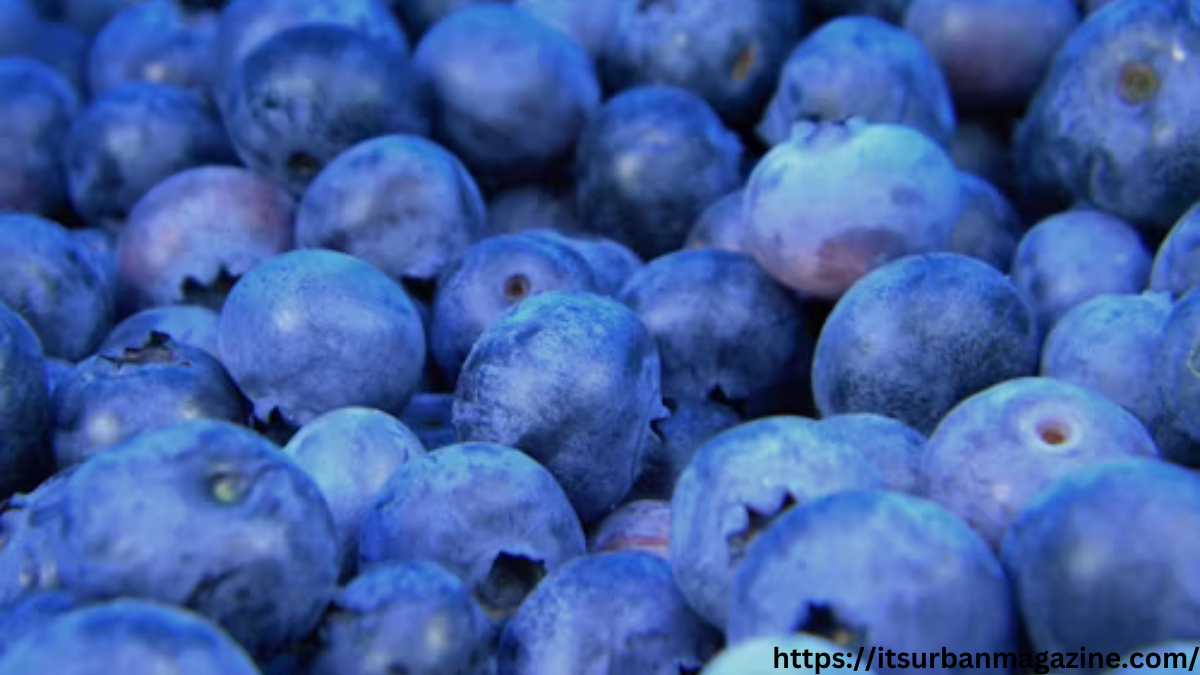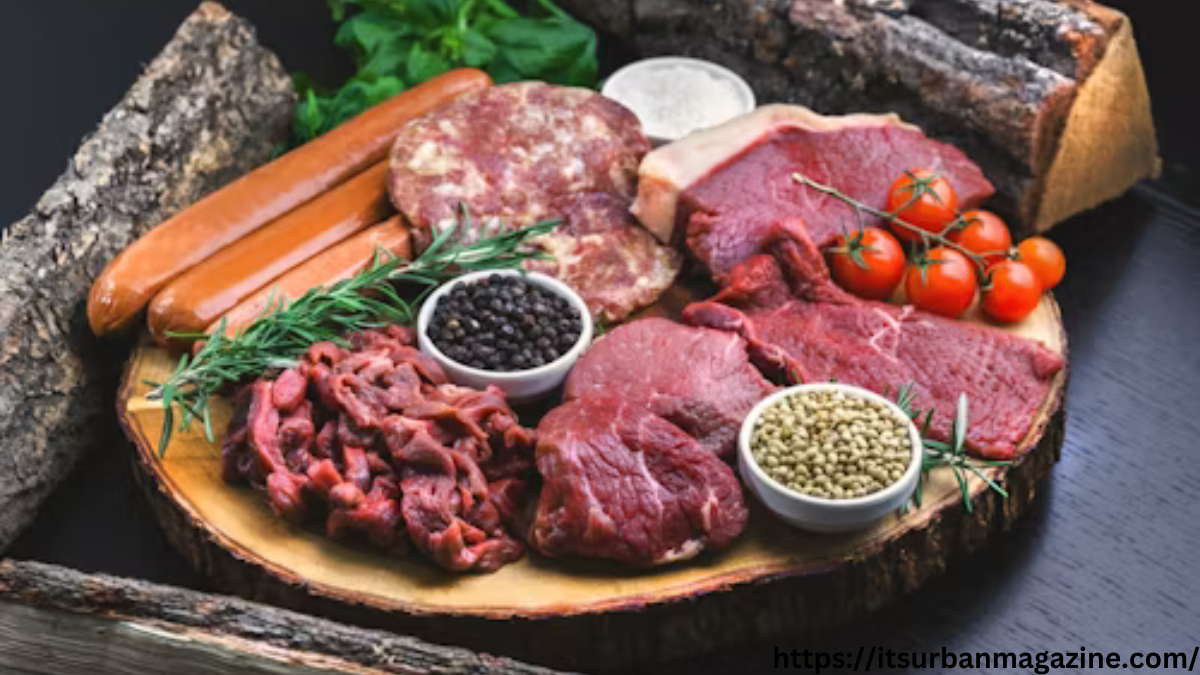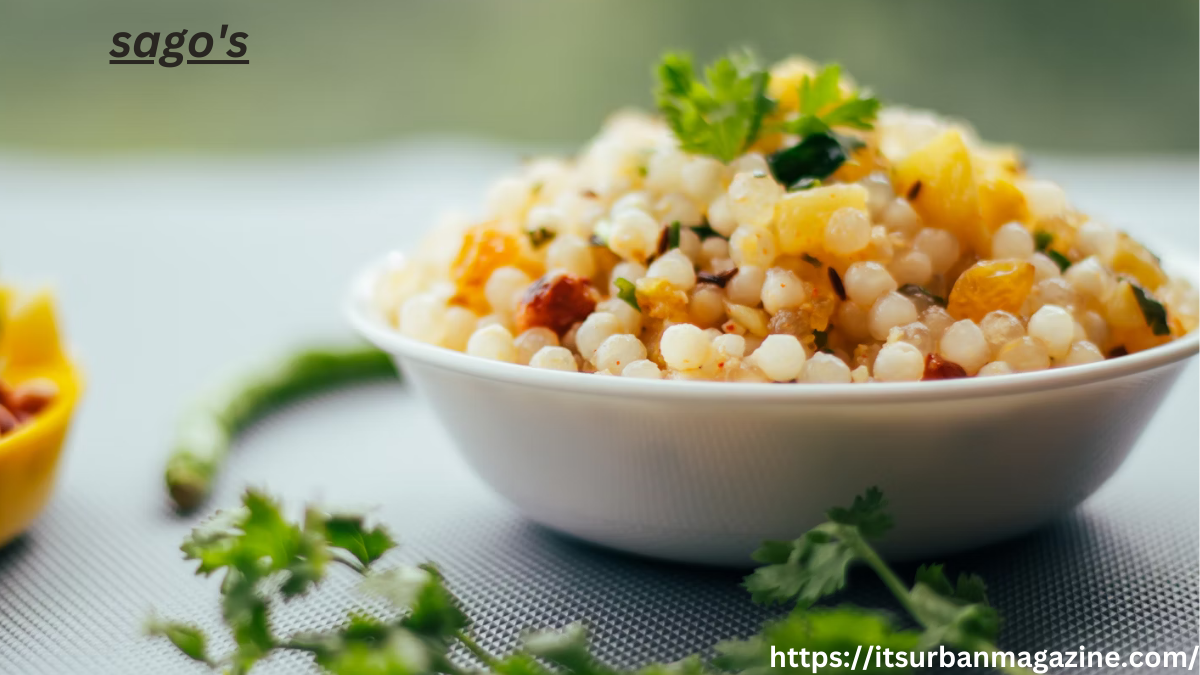Food
Pumpkin Fluff: A Delightful Fall Treat

The approach of fall, with its leaves turning brilliant colours of crimson and gold and its air becoming crisp, ushers in a wealth of seasonal joys. Many people have a soft spot for baked goods with a pumpkin spice taste. This article will introduce you to the wonderful world of “Pumpkin Fluff,” a delicacy that is the epitome of autumn in a spoonful.
What is Pumpkin Fluff?
Pumpkin Fluff is a very simple pumpkin-flavored delicacy. Pumpkin puree, whipped cream, and a variety of cozy spices come together in this delicious dish. This dessert is a visual and gustatory delight when served cold, making it ideal for your autumn celebrations.
The History of Pumpkin Fluff
A Time-Honored Tradition
The seasonal pairing of pumpkins and fall has been celebrated for ages. Pumpkins were a major meal for Native Americans, and they were the first people to produce and eat them. After Europeans settled the New World, pumpkins became an even more ingrained part of American cuisine. The notion of combining Old World baking techniques with the New World pumpkin crop to make a sweet, airy pumpkin treat probably originated around this time.
Modern Adaptations
Over time, several variations on the classic Pumpkin Fluff recipe have emerged. Some recipes call for cream cheese, which gives the dish a deeper, thicker texture, while others utilize graham crackers. These variations show how adaptable this seasonal treat can be.
How to Make Pumpkin Fluff
Ingredients
Before we delve into the steps, let’s gather our ingredients:
- 1 cup of pumpkin puree
- 1 cup of whipped cream
- 1/2 cup of powdered sugar
- 1 teaspoon of vanilla extract
- 1 teaspoon of ground cinnamon
- 1/2 teaspoon of ground nutmeg
- 1/4 teaspoon of ground cloves
Step-by-Step Preparation
- In a mixing bowl, combine the pumpkin puree, powdered sugar, vanilla extract, and spices.
- Gently fold in the whipped cream until the mixture becomes smooth and fluffy.
- Transfer the Pumpkin Fluff to a serving dish.
- Refrigerate for at least two hours to allow the flavors to meld.
Serving Suggestions
Pumpkin Fluff is a versatile dessert that can be enjoyed in various ways:
- Serve it as a dip with graham crackers or apple slices.
- Layer it with crushed gingersnap cookies for a delightful parfait.
- Use it as a filling for pie or tart shells.
- Top it with a dollop of whipped cream and a sprinkle of cinnamon for an extra treat.
Conclusion
Pumpkin Fluff, in conclusion, is a wonderful autumn treat that perfectly encapsulates the season. Both children and adults love it because of the subtle sweetness and subtlety of the pumpkin taste. Pumpkin Fluff is perfect for satisfying your sweet need during a party or on a chilly fall evening.
FAQs
Q. Can I use canned pumpkin puree for Pumpkin Fluff?
Yes, canned pumpkin puree works perfectly for this recipe, but make sure it’s 100% pure pumpkin.
Q. Can I make Pumpkin Fluff ahead of time?
Absolutely! Pumpkin_Fluff can be prepared a day in advance and refrigerated until you’re ready to serve it.
Q. Is Pumpkin_Fluff suitable for vegans?
You can make a vegan version of Pumpkin_Fluff by using dairy-free whipped cream and ensuring your powdered sugar is vegan-friendly.
Q. Can I freeze Pumpkin_Fluff?
While it’s best enjoyed fresh, you can freeze Pumpkin_Fluff in an airtight container for up to a month. Thaw it in the refrigerator before serving.
Q. What other spices can I add to customize the flavor?
Feel free to experiment with spices like ginger, allspice, or cardamom to create your unique twist on Pumpkin_Fluff.
Food
Exploring the Wonders of Falsa: A Culinary and Medicinal Treasure

Falsa, scientifically known as Grewia asiatica, is a small, berry-like fruit that holds a significant place in both culinary delights and traditional medicinal practices. Originating from South Asia, particularly India and Pakistan, falsa has garnered attention worldwide for its unique taste, nutritional benefits, and therapeutic properties.
Nutritional Profile of Falsa
Falsa is little, but it has a lot of nutrients. Packed with vital vitamins and minerals, it provides several health advantages. This little fruit is a great complement to a balanced diet since it is a strong source of antioxidants, calcium, potassium, vitamin C, and vitamin A. According to studies, eating falsa on a daily basis may strengthen immunity, facilitate better digestion, and enhance skin health.
Culinary Uses of Falsa
Falsa’s adaptability also extends to the kitchen, where it gives a refreshing touch to a variety of foods and drinks. Fresh falsa berries provide a rush of acidic sweetness and are often eaten as a snack. Falsa is used in cooking to make cool beverages such falsa sherbet, smoothies, and cocktails. It also enhances the flavor profile of sweets such as fruit salads, sorbets, and ice creams with its unique taste.
Medicinal Uses of Falsa
Falsa’s medicinal qualities have earned it a longstanding reputation in traditional medicine. Falsa is said to enhance appetite, relieve heat-related illnesses, and ease digestive problems in Ayurvedic and Unani medicine. Some of these claims are supported by recent research, which emphasizes falsa’s promise in treating oxidative stress, decreasing inflammation, and controlling gastrointestinal issues.
Falsa Farming and Cultivation
Falsa is a tropical and subtropical plant that grows best in sandy loam soil with good drainage. The main methods of cultivation are stem cuttings or seeds. However, weather conditions including cold and drought, as well as pests and diseases, pose problems to the production of falsa. For falsa farming to be effective, adequate irrigation, appropriate fertilizer management, and insect control are essential.
Harvesting and Processing of Falsa
Before being harvested, falsesa fruits go through a maturing process that turns them from green to purple-black when mature. They are carefully chosen to prevent cuts and bruises. Falsa_berries need to be handled carefully after harvest in order to preserve their taste and freshness. They may be eaten raw or processed to make jams, syrups, preserves, and other goods with a longer shelf life.
Falsa in Popular Culture
In addition to its use in food and medicine, falsa_is deeply ingrained in South Asian culture. It is enjoyed at falsa_festivals, such as Falsa_Mela in Pakistan, and is connected to summertime celebrations. Falsa_sherbet, a favorite summertime beverage that represents vigor and enjoyment, is served cold.
Conclusion
Falsa continues to enchant palates and hearts all over the globe with its distinct flavor and plethora of health advantages. Whether consumed raw, cooked, or used in traditional medicines, falsa is still a beloved fruit that symbolizes the many cultures and tastes of South Asia.
FAQs
Q. Is falsa_suitable for diabetic individuals?
Falsa_has a low glycemic index and may be consumed in moderation as part of a balanced diet by individuals with diabetes. However, it’s advisable to consult a healthcare professional for personalized dietary recommendations.
Q. Can falsa_be grown in temperate climates?
While falsa_thrives in subtropical and tropical regions, it may be challenging to cultivate in temperate climates due to its sensitivity to cold temperatures. Protective measures like frost protection may be necessary in such environments.
Q. Are there any side effects of consuming_falsa?
Generally, falsa_is safe for consumption when eaten in moderate amounts. However, excessive intake may cause digestive discomfort in some individuals. It’s essential to practice moderation and listen to your body’s signals.
Q. How can I incorporate_falsa into my diet?
Fals_ can be enjoyed in various ways, including fresh consumption, as a topping for yogurt or oatmeal, blended into smoothies, or infused into beverages like iced tea or lemonade.
Q. Is falsa_available year-round?
Falsa_is a seasonal fruit typically available during the summer months, from May to August, in South Asian countries. However, frozen falsa_pulp or products may be available year-round in some regions.
Food
I Show Meat: The Future of Sustainable Eating

In recent years, the food sector has seen a major surge in alternative meat options, one of the most intriguing being I Show Meat. This unique concept aims to redefine the way we think about meat consumption, delivering a sustainable and ethical alternative to traditional animal-based goods.
Understanding the Concept of I Show Meat
In conclusion, Queendom Puzzle Episode 5 provides all the excitement, drama, and intrigue that fans have come to anticipate from this spectacular series. With its compelling characters, tough puzzles, and nail-biting turns, it’s a must-watch for puzzle aficionados worldwide.
Benefits of I Show Meat
Health Benefits
One of the key advantages of I Show Meat is its health benefits. Since it is raised in a regulated environment, I Show Meat is free from antibiotics, hormones, and other dangerous substances frequently found in regular meat products. Additionally, I Show Meat is lower in saturated fat and cholesterol, making it a better alternative for customers.
Convenience
I Show Meat provides unprecedented convenience compared to conventional meat. With no requirement for livestock rearing, I Show Meat can be produced on a vast scale in a fraction of the time it takes to grow animals. This ensures a more dependable supply of meat year-round, decreasing the danger of shortages and price swings.
Sustainability
I Show Meat’s sustainability is perhaps its greatest advantage. One of the main causes of water pollution, greenhouse gas emissions, and deforestation is conventional meat production. Conversely, I Show Meat is a more ecologically responsible choice since it uses a lot less resources in its production.
How to Incorporate I Show Meat into Your Diet
Incorporating I Show Meat into your diet is easier than you might think. There are countless recipes and meal ideas available online that incorporate I Show Meat as a substitute for traditional meat. From burgers and sausages to steaks and meatballs, the possibilities are endless.
Comparing I Show Meat with Traditional Meat
I Show_Meat has a lot going for it, but it’s crucial to think about how its taste, texture, and nutritional content compare up against normal meat. While some may perceive a tiny taste alteration, many remark that once cooked, I Show_meat is practically indistinguishable from conventional beef. Furthermore, I Show_Meat delivers a significant quantity of protein, vitamins, and minerals, making it similar in terms of nutritional value.
Addressing Common Concerns about I Show Meat
Despite its numerous advantages, I Show_Meat still encounters criticism from certain customers. Common issues include its flavour, nutritional value, and environmental effect. However, continued research and developments in technology are overcoming these difficulties, making I Show_Meat an increasingly feasible alternative for customers.
The Future of I Show Meat
As technology continues to improve, the future of I Show_Meat seems exciting. With rising worries about the environmental effect of conventional_meat production, I Show_Meat provides a sustainable and ethical alternative that might help solve some of the most important challenges confronting the food business today.
Conclusion
I Show Meat offers a sustainable and moral substitute for conventional meat products, marking a significant breakthrough in the realm of food technology. I Show Meat has the potential to completely change our perception of meat eating thanks to its many health benefits, ease of use, and positive environmental effects.
FAQs
Q. Is I Show Meat safe to eat?
Yes, I Show_Meat is produced in a controlled environment and is subject to rigorous safety standards, making it safe for consumption.
Q. How does I Show_Meat compare to plant-based alternatives?
While both offer sustainable alternatives to traditional meat, I Show_Meat more closely resembles the taste and texture of conventional meat.
Q. What is the shelf life of I Show_Meat?
I Show_Meat typically has a longer shelf life than traditional meat due to its sterile production process.
Q. Is I_Show Meat available for purchase now?
While I Show_Meat is still in the early stages of development, several companies are working to bring it to market in the near future.
Food
Definition of Sago’s

A diverse and nutrient-dense food item with a long history, sago’s is essential to many civilizations around the globe. This page examines the history, cultivation techniques, health advantages, and variety of applications of sago.
History and Origin
For many years, especially in Southeast Asia, sago has been an essential element of diets. Sago has long been an integral part of communities’ daily diets, serving as their main source of carbohydrates.
Sago Production
Harvesting Process
The starch from the pith of certain palm tree species must be extracted in order to produce sago. The complex harvesting procedure adds to the distinctive characteristics of sago.
Nutritional Value
Sago as a Staple Food
Sago is typically appreciated for having a high carbohydrate content, but it also has important nutrients. This section explores sago’s nutritional profile and emphasizes why it’s important as a staple diet.
Culinary Uses
Recipes and Dishes
The culinary variety of sago goes well beyond conventional limits. Discover a variety of recipes and meals that highlight how versatile sago is in contemporary cooking, from savory to sweet.
Health Benefits
Rich in Carbohydrates
Examining sago’s nutritional importance, we investigate how those looking for a sustainable energy source may benefit from its carbohydrate-rich composition.
Cultural Significance
Sago in Local Festivals
Sago is more than simply a culinary item in many cultures; it has cultural importance and is often a main attraction during regional festivals and festivities.
Modern Applications
Industrial Uses
Sago has spread beyond the kitchen to be used in a number of sectors. Discover the unexpected uses of sago in business environments.
Environmental Impact
Sustainable Sago Production
We look at the environmental effects of sago production and investigate sustainable techniques in the sector as concerns about sustainability gain traction globally.
Challenges in Sago Industry
Economic Factors
Despite its widespread appeal, the sago sector is not without problems. Economic considerations are important since they affect market dynamics as well as production.
Sago Myths and Facts
Debunking Common Misconceptions
Distinguish reality from fiction as we dispel popular misconceptions about sago and provide light on its nutritional qualities and possible health implications.
Future Trends
Innovations in Sago Processing
Examine the cutting-edge developments influencing sago processing going forward and the possible effects they may have on the sector.
Global Presence
Sago in International Cuisines
Sago has transcended geographical boundaries, influencing international cuisines. Discover how different cultures incorporate sago into their culinary traditions.
Sago Sustainability
Eco-Friendly Practices
This section examines programs that support the production and consumption of eco-friendly sago, emphasizing the significance of sustainable practices.
Conclusion
This part summarizes the voyage through the world of sago’s, emphasizing its nutritional value, cultural importance, and possibilities for a sustainable future.
FAQs
Q. Is sago gluten-free?
Yes, sago is naturally gluten-free, making it a suitable alternative for individuals with gluten sensitivity.
Q. Can sago be consumed by individuals with diabetes?
While high in carbohydrates, sago can be consumed in moderation by individuals with diabetes, but consultation with a healthcare professional is advised.
Q. How is sago different from tapioca pearls?
Sago and tapioca pearls come from different plants, with sago originating from palm trees and tapioca pearls from cassava roots.
Q. What is the shelf life of sago?
Properly stored, sago can have a long shelf life of several years due to its low moisture content.
Q. Are there any allergic reactions associated with sago consumption?
Allergic reactions to sago are rare, but individuals with allergies to palm products should exercise caution.
-

 FASHION4 months ago
FASHION4 months agoIntroduction to Nike Snowboard Boots
-

 TECH9 months ago
TECH9 months agoUrban Dictionary OP: A Definitive Guide to Internet Slang
-

 FASHION8 months ago
FASHION8 months agoThe Allure of Suela Roja: Red Soles that Redefine Elegance
-

 NEWS9 months ago
NEWS9 months agoUnveiling the Enigmatic World of “imaubreykeys”
-

 NEWS10 months ago
NEWS10 months agoEnhancing Educational Management with LAUSD MISIS: A Comprehensive Guide
-

 NEWS10 months ago
NEWS10 months agoNOAA Vessel Speed Rule: Navigating Oceanic Waters Responsibly
-

 NEWS10 months ago
NEWS10 months agoAsia Cup 2023: The Cricket Extravaganza
-

 EDUCATION8 months ago
EDUCATION8 months agoC.W. Park USC Lawsuit: Unraveling the Controversy
